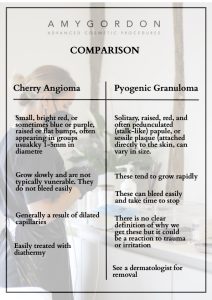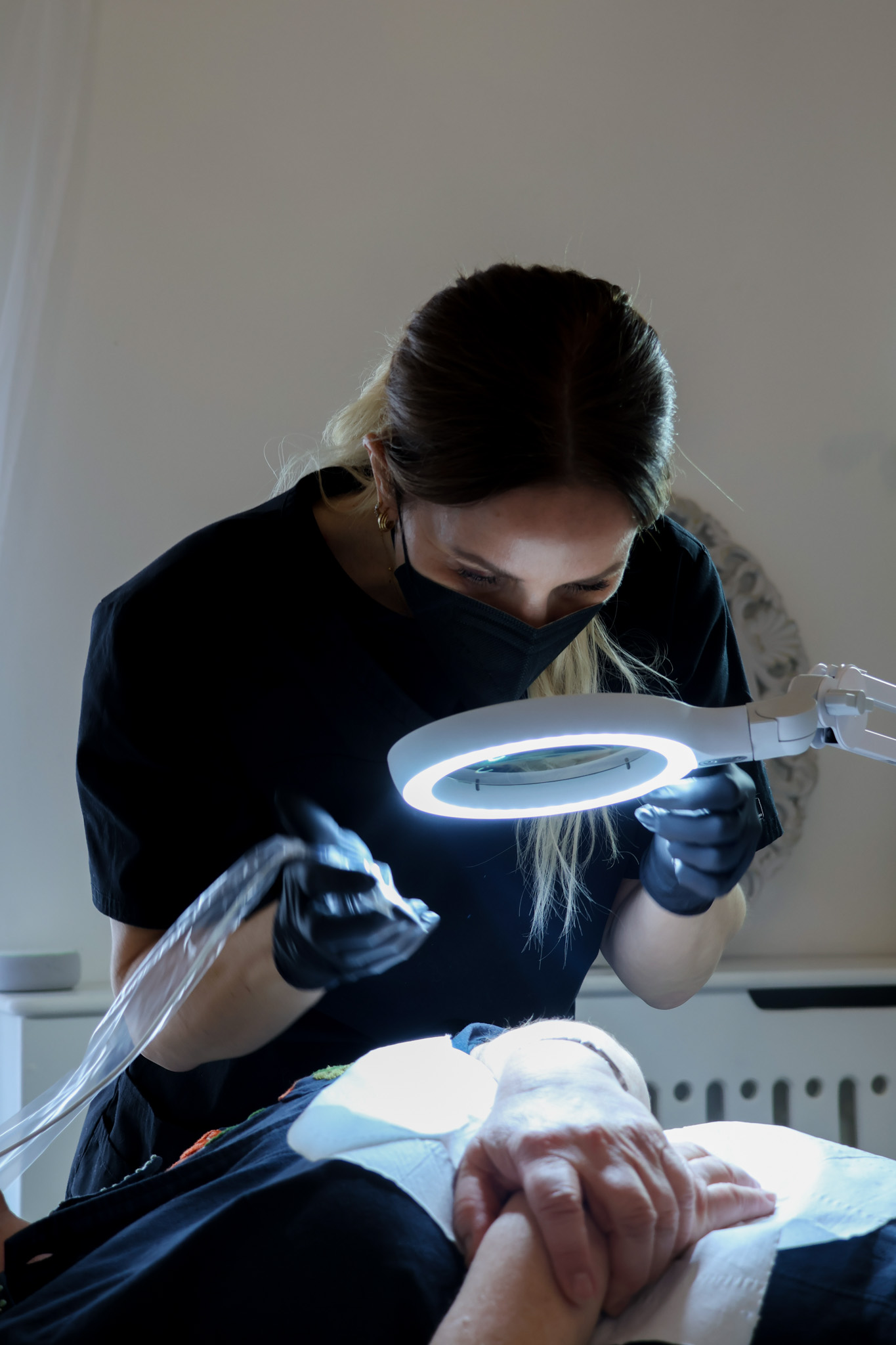If you’re unsure whether you have a Cherry Angioma or a Pyogenic Granuloma, it can be tricky to tell the difference at first glance. Both are types of growths that appear on the skin, but they have distinct characteristics that set them apart. The most crucial point to remember is that if you suspect you might have a Pyogenic Granuloma, it’s important to see a doctor and insist on a referral for treatment. These growths should be removed, as they can sometimes mimic melanoma if left untreated, which makes them particularly concerning.
Cherry Angiomas are typically small, red or purple, and usually appear as flat or slightly raised bumps on the skin. They are generally harmless and tend to appear more frequently with age. On the other hand, Pyogenic Granulomas often appear as red, shiny, and raised lesions that can bleed easily. They sometimes look cauliflower like and are more likely to develop rapidly and are often seen in response to trauma or injury to the skin.
While it’s not always easy to differentiate between the two without professional help, it’s important to be vigilant about any growth that seems suspicious. If you notice a growth that changes in size, color, or appearance, or if it begins to bleed, seek medical advice promptly. A doctor will be able to assess the growth and determine whether it’s a Cherry Angioma or a Pyogenic Granuloma. Early intervention is key, especially in cases where the growth could mimic more serious conditions like melanoma. Always err on the side of caution when it comes to your skin health.

To book a consultation in my Colchester or Chelmsford Clinic Click HERE

